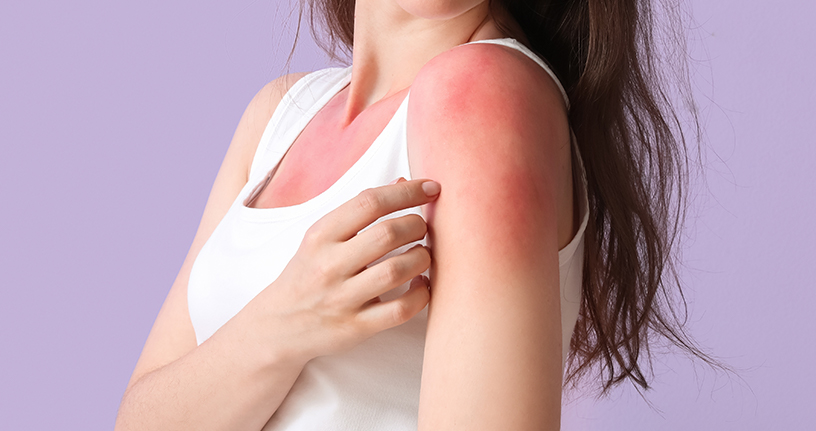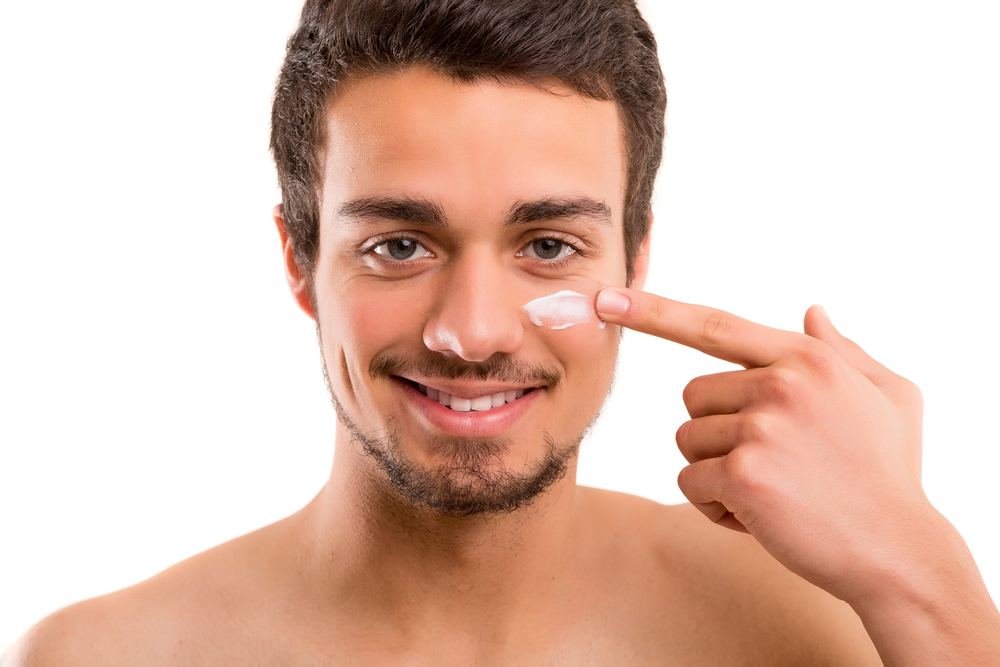A sunburn is a radiation burn that affects the skin and results from overexposure to ultraviolet radiation, commonly from the sun. Usually, normal symptoms consist of red or reddish skin that is too hot to touch, mild dizziness, and general fatigue. Excessive amounts of radiation can be life-threatening in extreme cases. Skin exposure to lesser amounts of UV radiation will often produce a suntan. You can see sunlight and feel heat, but you cannot see or feel UV radiation. Hence, it can be equally high and damaging on cool, cloudy, hot, and sunny days. UV radiation can pass through even light clouds. These radiations can also be spread by particles in the air and reflected off surfaces such as concrete, buildings, snow, and sand. You can’t feel UV-causing damage.
One may develop sunburn in as little as 11 minutes, and you won’t be able to know the cell and DNA damage is happening. Your skin turns red within 3 to 4 hours, but severe redness and inflammation appear between 12 to 24 hours after exposure. Increased blood circulation to the area elevates heat and swelling as the lymphatic system sends fluid to that area for damage repair. Heat affects the skin cells because the sun also releases infrared energy, causing damage such as first-degree burns. The longer sun exposure, the deeper the sunburn is. Some individuals may also experience blistering of skin with second and third-degree burns.
Most skin cells that suffer from DNA and sun damage begin programmed cell death. Cell death causes the dead layer of the skin to peel. Fresh cells appear underneath but may still have DNA damage within them. Depending on the severity of the problem, it can take days or weeks to heal. Mild sun damage can be treated at home, but severe sunburn needs immediate medical treatment, including a sunburn cream.
Symptoms
Major symptoms have been shown, such as redness during the initial days. This is followed by varying degrees of pain, which depends on the duration and intensity of sun exposure. Other reported symptoms include skin rash, itching, fever, chills, and syncope.
Cause
UV radiation, rays, or artificial sources, such as welding arcs and sunbed lamps, cause sun damage. It is the body’s reaction to DNA damage caused by ultraviolet rays. The body identifies the damage, which triggers several defense mechanisms, including DNA repair to revert the damage and increased melanin production to prevent future damage. Melanin acts as a photoprotectant and readily absorbs UV wavelength light. Preventing the disruption of bonds that photons with higher energy can inhibit the direct alteration of DNA and the generation of free radicals, thus causing indirect DNA damage.
Management
According to data, more than 95 percent of burn wounds can be managed successfully, and results can be received by primary care physicians with knowledge of basic concepts of burn care.
Close monitoring and follow-up are important aspects of management because of the progression of burn injuries. The goals of burn management include pain control, rapid healing, restoring function to the injured area, and good aesthetic results.
Prevention
The best way to prevent sunburn is to stay out of the sun. There is a higher chance of sunburn between 10 am and 3 am (when ultraviolet rays are strongest).
Recommendations to avoid heat rash and UV damage include:
-
- Don’t think sun exposure is safe when you cannot feel any stinging sensation on your skin. The stinging sensation you feel is heat and not UV radiation. If unsure, don’t take a chance, and check the sun protection.
- UV radiations are not associated with temperature, so don’t rely on temperature to gauge when you require sun protection.
- You can get sunburn even when relaxing and taking it easy, such as picnicking at the park, watching outdoor sports, or playing sports.
- Even winter activities such as snowboarding and snow skiing pose a high risk of sunburn because UV radiation tends to be higher in alpine regions than in sea levels. It is important to note that snow is efficient at reflecting UV radiation.
Treatment for sunburn
Sunburn treatment aims to help manage the symptoms while the body heals. Effective sunburn remedies include:
-
- Drink an adequate amount of water because spending time in the sun can lead to dehydration, ultimately causing sunburn
- Apply cool or cold compresses, or you may prefer bathing the sunburned area in cool water for sunburn relief
- Do not use soaps, as these may cause skin irritation
- Talk to a dermatologist about tretinoin ( Retino A cream), which helps soothe sunburn. You can buy Retino A cream online at the lowest price if applicable. Order tretinoin, a type of vitamin A, improves the skin’s appearance by replacing old skin cells with new ones and repairing the existing ones where sun damage is present. Avoid sunlight and sunbeds while using the cream.




